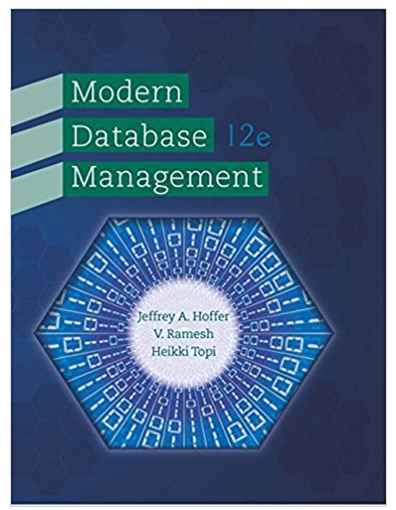Virtual Campus (VC) is a social media firm that specializes in creating virtual meeting places for students,
Question:
a. The first phase was fairly simplistic. Draw an ERD to represent this initial phase, described by the following:
• A client may maintain several social media sites (e.g., for intercollegiate sports, academics, local food and beverage outlets, or a specific student organization). Each site has attributes of Site Identifier, Site Name, Site Purpose, Site Administrator, and Site Creation Date.
• Any person may become a participant in any public site. Persons need to register with the client's social media presence to participate in any site, and when they do the person is assigned a Person Identifier; the person provides his or her Nickname and Status (e.g., student, faculty, staff, or friend, or possibly several such values); the Date Joined the site is automatically generated. A person may also include other information, which is available to other persons on the site; this information includes Name, Twitter Handle, Facebook Page link, and SMS Contact Number. Anyone may register (no official association with the client is necessary).
• An account is created each time a person registers to use a particular site. An account is described by an Account ID, User Name, Password, Date Created, Date Terminated, and Date/Time the person most recently used that account.
• Using an account, a person creates a posting, or message, for others to read. A posting has a Posting Date/Time and Content. The person posting the message may also add a Date when the posting should be made invisible to other users.
• A person is permitted to have multiple accounts, each of which is for only one site.
• A person, over time, may create multiple postings from an account.
b. After the first phase, a representative from one of the initial clients asked if it were possible for a person to have multiple accounts on the same site. Answer this question based on your ERD from part a of this exercise. If your answer is yes, could you enforce via the ERD a business rule of only one account per site per person, or would other than a data modeling requirement be necessary? If your answer is no, justify how your ERD enforces this rule.
c. The database for the first phase certainly provided only the basics. VC quickly determined that two additional features needed to be added to the database design, as follows (draw a revised ERD to represent the expanded second phase database):
• From their accounts, persons might respond to postings with an additional posting. Thus, postings may form threads, or networks of response postings, which then may have other response postings, and so forth.
• It also became important to track not only postings but also when persons from their accounts read a posting. This requirement is needed to produce site usage reports concerning when postings are made, when they are read and by whom, frequency of reading, etc.
d. Clients liked the improvements to the social media application supported by the database from the second phase. How useful the social media application is depends, in part, on questions administrators at a client organization might be able to answer from inquiries against the database using reports or online queries. For each of the example client inquiries that follow, justify for your answer to part c whether your database could provide answers to that inquiry (if you already know SQL, you could provide justification by showing the appropriate SQL query; otherwise, explain the entities, attributes, and relationships from your ERD in part c that would be necessary to produce the desired result):
• How many postings has each person created for each site?
• Which postings appear under multiple sites?
• Has any person created a posting and then responded to his or her own posting before any other person has read the original posting?
• Which sites, if any, have no associated postings?
e. The third phase of database development by VC dealt with one of the hazards of social media sites— irresponsible, objectionable, or harmful postings (e.g., bullying or inappropriate language). So for phase three, draw a revised ERD to the ERD you drew for the second phase to represent the following:
Fantastic news! We've Found the answer you've been seeking!
Step by Step Answer:
Related Book For 

Modern Database Management
ISBN: 978-0133544619
12th edition
Authors: Jeff Hoffer, Ramesh Venkataraman, Heikki Topi
Question Posted:






